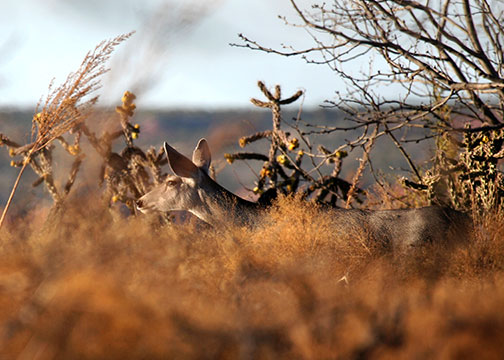
Native grasslands
Wildlife-friendly grasses, native bluestem, grama and buffalograss, once again take root throughout the Canyonlands, enriching the soil and conserving the rainfall. These grasses were the primary food source of the American buffalo and then the Longhorns. Sumacs, algeritas, wild plums and hackberry and cottonwood trees hold their niches in creeks and draws, supporting the ecosystem and nurturing its wildlife.
Thanks to the farsighted leadership of these ranchers, universities and Texas and federal wildlife and conservation agencies, millions of acres of the Texas Canyonlands have returned to native, wild places where wildlife once again thrives in this rich habitat.
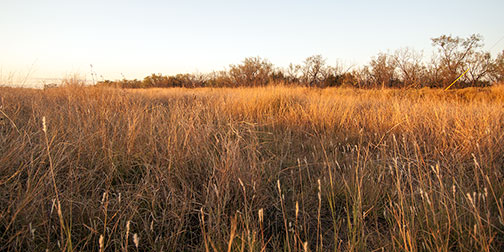
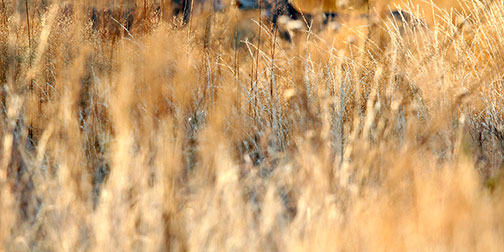
Morning sunlight breaks over a meadow of waist-deep grasses and vegetation
Late afternoon sunlight creates an amber and bronze field of grasses and meadow vegetation
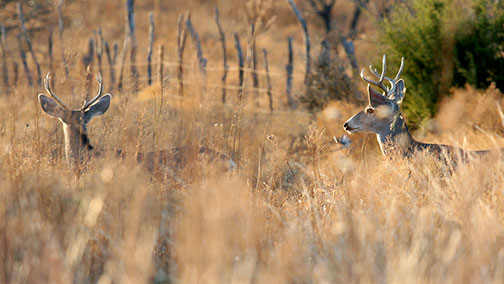
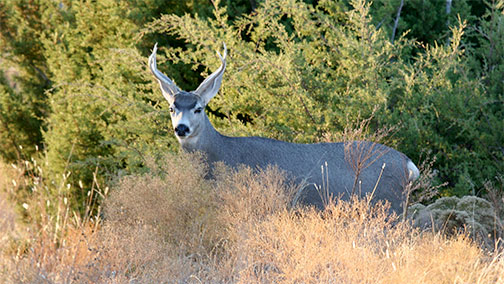
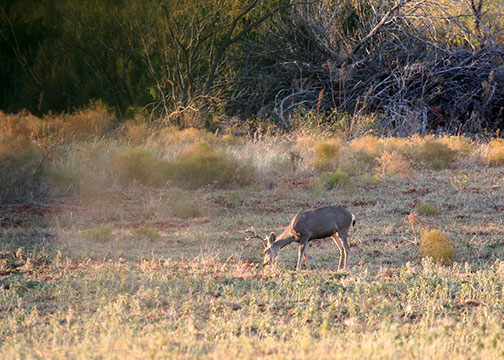
Description-jim_watson_20071206_013
Healthy young buck stands tall in front of evergreen Juniper and behind a thick swathe of grasses
Llano Estacado
The Llano Estacado ecoregion, translated as the “Staked Plain,” is an elevated plain surrounded by escarpments on three sides. The Texas Canyonlands lie along its three-hundred-mile eastern rim, forming the headwaters of the Red, Brazos and Colorado rivers.
The Pecos River on the western rim captured the headwater streams of rivers that once ran across the plain from the Rockies, isolating the Llano Estacado and truncating the drainage areas of the Red, Brazos, and Colorado rivers of Texas. As a result, the dry plain, cut off from a mountain surface water source and with little slope to induce runoff, has a very low drainage density. Instead, the smooth surface of the plain holds seasonal rainfall in myriads of small intermittent ponds or playas.
The Llano Estacado was once covered with shortgrass prairie, composed of buffalograss, blue and sideoats grama, and little bluestem. An estimated 7 million bison once populated the southern High Plains. They were the most prominent elements of a prairie ecosystem that no longer functions as an interdependent web of bison, black-tailed prairie dog, black-footed ferret, snake, ferruginous hawk, coyote, swift fox, deer, pronghorn, mountain lion, and gray wolf. (USGS, 2004)
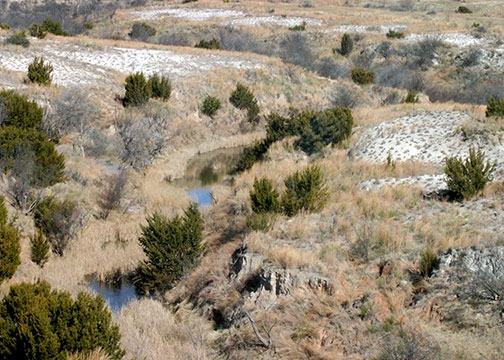
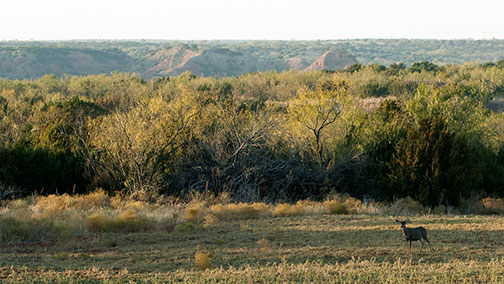

brazosrivercanyonlands.com is published by Jim Watson and licensed
under a Creative Commons Attribution-NonCommercial 4.0 International License.